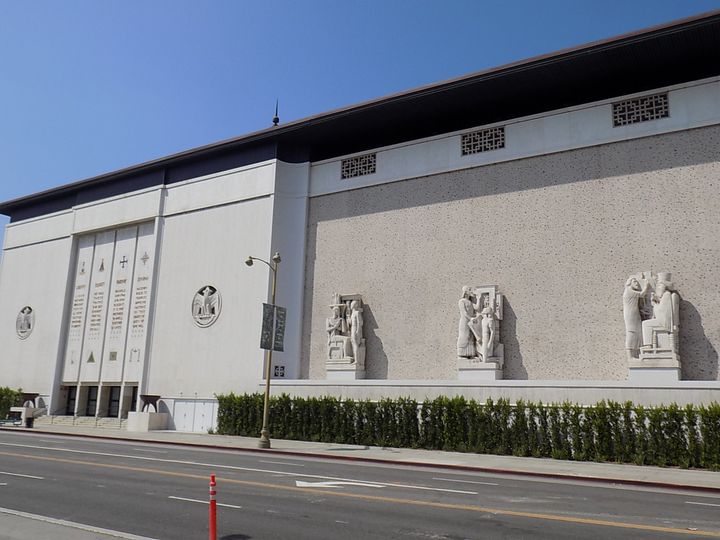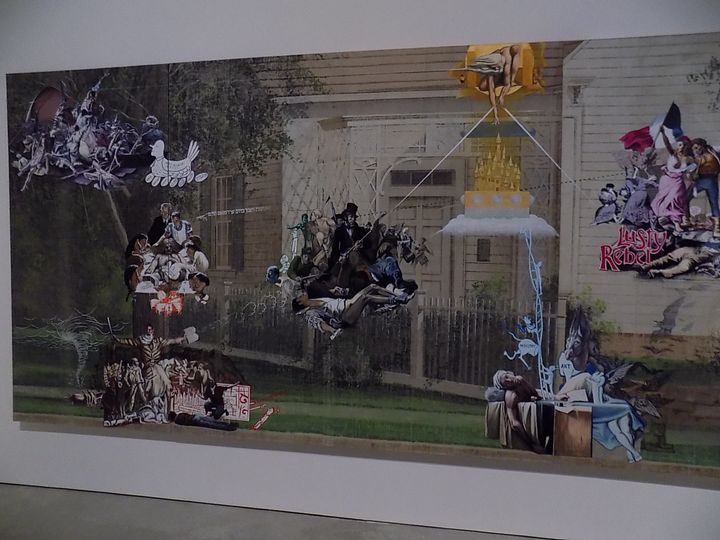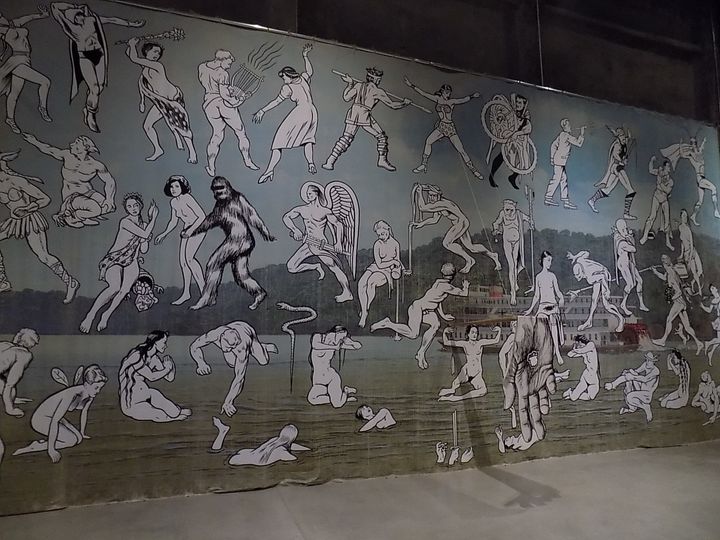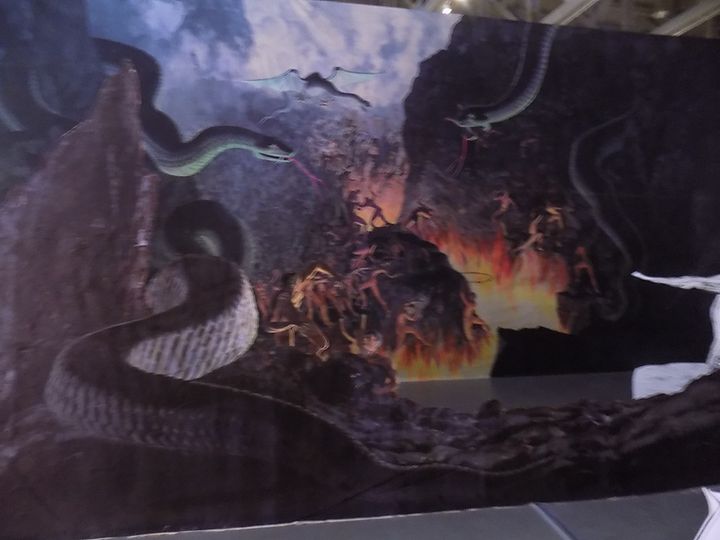
The Marciano Art Foundation is housed in an impressive former Masonic temple.
My paternal grandfather and great grandfather were award-winning landscape painters. My wife, Sandra Wells, is a painter of magical realism. We’re naturally not fans of most contemporary art—the only talent that comes out of art schools is the skill to be outrageous, to create something so off-the-wall (in a manner of speaking) that it creates scandalous buzz. We agree with the dismal assessment by Tom Wolfe in The Painted Word and in Huntington Harford’s Art or Anarchy? How the Extremists and Exploiters Have Reduced the Fine Arts to Chaos and Commercialism.
We went to Amsterdam for 500th anniversary of the Golden Age of Dutch Painting and after enjoying the glorious Rembrandts and Vermeers, dropped by a modern art museum. Inside, we had trouble finding the exhibits, since it was still under construction—then the staff explained that the rubble all over the floor was actually the exhibit.
So we were skeptical when the opening was announced of a new contemporary art museum in Hollywood, Calif., by the Marciano Art Foundation www.marcianoartfoundation.org. We did love the fact that a private collection would be housed in the long-vacant Scottish Rite Masonic Temple that is a magnificent piece of architecture. But it is free and open only Thursday through Saturday (we didn’t know we should have ordered timed tickets online in advance, but they set one this on the spot).

One of 60 installations by Jim Shaw for “The Wig Museum”
The Marciano focuses on artists who have emerged since the 1990s, so you might call this Contemporary Extreme. For the moment, I’m not going to even get into the quite interesting abtracts on the third floor or the elaborately weird video installation on the second. It is worth traveling to Los Angeles just for the first floor exhibits by Jim Shaw called “The Wig Museum” (open until January 13, 2018). And it does start with what seems to be a straightforward exhibit of historic wigs—until you look more closely at the parody of the concept (flash isn’t allowed, so I couldn’t get a good picture of this section). The title is reference to the Masons wearing wigs and costumes during esoteric rituals that seemed to the artist to symbolize Anglo-Saxon power, which he depicts as coming to an end. This is Shaw’s first comprehensive solo exhibit in L.A., despite his having worked here since the 1970s.

Shaw doesn’t label his pieces so you have to look at the brochure and guess what all this is about (but it’s intriguing anyway)
We get annoyed by artists who label their work Untitled because while the concept is supposed to stimulate the viewers’ own creative interpretation, most abstracts don’t have enough visual or symbolic substance to be worth the heavy lifting. Shaw has chosen to have the brochure accompanying the exhibit to list pieces by number and titles, but without corresponding identification on the 66 pieces. Since Shaw draws and paints figures, you would think it would be somewhat obvious which ones were “The Jefferson Memorial,” “The Rape of Europa,” or “The Angel of the Chemical Plant.” The staff didn’t know much, either, though pointed out “The Ascension of George Washington” and another was obvious, “Not Since Superman Died.” We imagine there is method to the madness, but it made our visit less satisfying.
Nevertheless, Shaw’s massive installations and visionary themes were a wonder to behold, after so many works elsewhere that appeared to consist of paint thrown at a canvas. Too bad this exhibit isn’t permanent.

This seems to be Shaw’s vision of hell, but hell if we can figure out the title.
